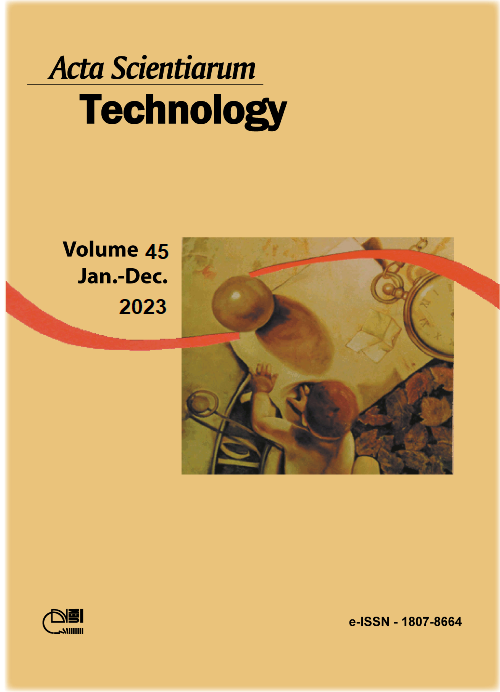Pesticide residues detected in Colossoma macropomum by the modified QuEChERS and GC-MS/MS methods
DOI:
https://doi.org/10.4025/actascitechnol.v45i1.63831Palavras-chave:
Environmental toxicology; fish farming; fish technology; chromatographic analysis; technology for aquacultureResumo
This study aimed to detect pesticides in the muscle tissue of farmed tambaqui (Colossoma macropomum), in relation to good management practices (GMP) and prophylaxis and biosecurity measures. There were 54 fish farms randomly selected from the 138 found in the Microregion of Zona da Mata, RO - Brazil, for visits and collection of epidemiological data. There were extracted 24 muscle fragments were extracted from dorsolateral portion of the tail of five specimens tambaqui per fish farming. The methods of detection and quantification of pesticide residues were modified QuEChERS and GC-MS/MS. Most fish farms are small businesses and their production areas are smaller than a rural module. These ventures are an income alternative for rural producers, this information is confirmed in percentage of 88.89% (48/54) of the rural properties visited have livestock and agriculture as their main productive activity. Water monitoring was carried out in 70.37% of fish farms. However, with frequency of two water analyzes per year. Preventive and prophylactic measures taken were performed in 30% (17/54). In addition, 7% (4/54) of fish farmers reported using sodium chloride and/or using formalin as a secondary preventive measure. It is also important to mention that there was a report of administration of potassium permanganate in a fish farm, 2% (1/54). There were 12.49% (3/54) positive for at least one pesticide. The chemical compounds found Azosxystrobin (<LOQ), Epoxiconazole (<LOQ) and Chlorpyrifos (<LOQ). The presence of Azosxystrobin, Epoxiconazol and Chlorpyrifos in tambaqui muscle tissue samples was detected above acceptable limits by the PNCRC.
Downloads
Downloads
Publicado
Como Citar
Edição
Seção
Licença
DECLARAÇíO DE ORIGINALIDADE E DIREITOS AUTORAIS
Declaro que o presente artigo é original, não tendo sido submetido í publicação em qualquer outro periódico nacional ou internacional, quer seja em parte ou em sua totalidade.
Os direitos autorais pertencem exclusivamente aos autores. Os direitos de licenciamento utilizados pelo periódico é a licença Creative Commons Attribution 4.0 (CC BY 4.0): são permitidos o compartilhamento (cópia e distribuição do material em qualqer meio ou formato) e adaptação (remix, transformação e criação de material a partir do conteúdo assim licenciado para quaisquer fins, inclusive comerciais.
Recomenda-se a leitura desse link para maiores informações sobre o tema: fornecimento de créditos e referências de forma correta, entre outros detalhes cruciais para uso adequado do material licenciado.















